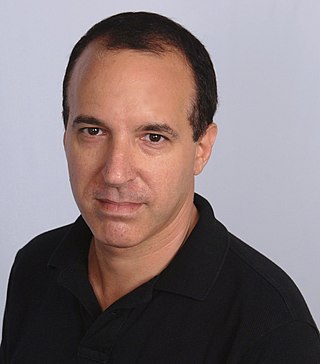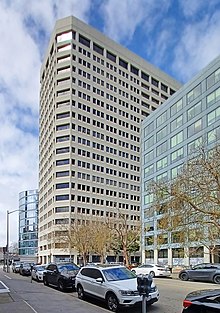Computer-aided translation (CAT), also referred to as computer-assisted translation or computer-aided human translation (CAHT), is the use of software, also known as a translator, to assist a human translator in the translation process. The translation is created by a human, and certain aspects of the process are facilitated by software; this is in contrast with machine translation (MT), in which the translation is created by a computer, optionally with some human intervention.

SAS is a statistical software suite developed by SAS Institute for data management, advanced analytics, multivariate analysis, business intelligence, criminal investigation, and predictive analytics. SAS' analytical software is built upon artificial intelligence and utilizes machine learning, deep learning and generative AI to manage and model data. The software is widely used in industries such as finance, insurance, health care and education.
iThenticate is a plagiarism detection service for the corporate market, from Turnitin, LLC, which also runs Plagiarism.org.
An essay mill is a business that allows customers to commission an original piece of writing on a particular topic so that they may commit academic fraud. Customers provide the company with specific information about the essay, including number of pages, general topic, and a time frame to work within. The customer is charged a certain amount per page. A similar concept is the essay bank, a company from which students can purchase prewritten but less expensive essays on various topics, at higher risk of being caught. Both forms of business are under varying legal restraints in some jurisdictions.
Contract cheating is a form of academic dishonesty in which students pay others to complete their coursework. The term was coined in a 2006 study by Thomas Lancaster and the late Robert Clarke (UK), as a more inclusive way to talk about all forms of academic work, as opposed to more outdated terms such as "term paper mill" or "essay mill", which refer to text-based academic outsourcing. In contrast, Lancaster and Clarke are computer scientists who found evidence of students systematically outsourcing coding assignments. Hence, they coined the term "contract cheating" to include all outsourced academic work, regardless of whether it is from text-based or non-text-based disciplines.
Plagiarism detection or content similarity detection is the process of locating instances of plagiarism or copyright infringement within a work or document. The widespread use of computers and the advent of the Internet have made it easier to plagiarize the work of others.

Plagiarism is the representation of another person's language, thoughts, ideas, or expressions as one's own original work. Although precise definitions vary depending on the institution, in many countries and cultures plagiarism is considered a violation of academic integrity and journalistic ethics, as well as social norms around learning, teaching, research, fairness, respect, and responsibility. As such, a person or entity that is determined to have committed plagiarism is often subject to various punishments or sanctions, such as suspension, expulsion from school or work, fines, imprisonment, and other penalties.
PlagTracker is a Ukrainian-based online plagiarism detection service that checks whether similar text content appears elsewhere on the web. It was launched in 2011 by Devellar.
Grammarly is a Ukraine-founded cloud-based typing assistant, headquartered in San Francisco. It reviews spelling, grammar, punctuation, clarity, engagement, and delivery mistakes in English texts, detects plagiarism, and suggests replacements for the identified errors. It also allows users to customize their style, tone, and context-specific language.
Unicheck is a cloud-based plagiarism detection software that finds similarities, citations and references in texts.
PlagScan is a plagiarism detection software, mostly used by academic institutions. PlagScan compares submissions with web documents, journals and internal archives. The software was launched in 2009 by Markus Goldbach and Johannes Knabe of Cologne, Germany.
Semantic Scholar is a research tool for scientific literature powered by artificial intelligence. It is developed at the Allen Institute for AI and was publicly released in November 2015. Semantic Scholar uses modern techniques in natural language processing to support the research process, for example by providing automatically generated summaries of scholarly papers. The Semantic Scholar team is actively researching the use of artificial intelligence in natural language processing, machine learning, human–computer interaction, and information retrieval.

Kenny Sahr is an Israeli technology executive. He has served as VP Marketing at Sodyo and RadView Software. He was the founder of the Internet's first free homework and term paper website - SchoolSucks.com. He is a regular contributor to The Times of Israel.
Gradescope is an American ed-tech company that offers online and AI-assisted grading tools for higher education. Founded in 2014, the company is headquartered in Berkeley, California. The company's grading software offers tools for grading written exams, homework assignments, and auto-grading submitted code. As of the 2020 school year Gradescope stated that over "25,000 educators" used their product.

Phase One Karma (P1K) is an IT company developing products based on Artificial Intelligence (AI) technologies. The company produced Unicheck, a cloud-based plagiarism detection software; Lawrina, a legaltech ecosystem; and Otomistrz, a marketplace for home service professionals and homeowners.
GPTZero is an artificial intelligence detection software developed to identify artificially generated text, such as that produced by large language models.
Artificial intelligence detection software aims to determine whether some content was generated using artificial intelligence (AI).

Since OpenAI's public release of ChatGPT in November 2022, the chatbot and its peers have been at the source of intense discussion within education, with many schools and universities taking hostile stances towards usage of large language models, while others have embraced the use of the tools in assignments. The usage of ChatGPT has inspired many to foresee a potential paradigm shift in education, with oral exams being proposed to assure that it cannot be used in tests.
QuillBot is a software developed in 2017 that uses artificial intelligence to rewrite and paraphrase text.

Undetectable AI (Undetectable.ai) is an AI content detection software that rewrites AI-generated text to make it appear more human.







